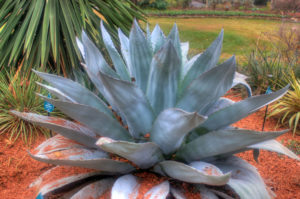Blue Agave Nectar is sweeter than honey and tends to be less viscous. Most agave syrup comes from Mexico and South Africa.
Uses
- There are a few parts of the agave plant that have culinary uses.
- The flowers are edible and many people toss them in salads.
- The leaves are rich in agave sap and can be eaten, and the stalk of the plant can be roasted before they flower.
- This produces a distinctive, sweet molasses flavor.
- The product that is used in both Tequila and natural sweeteners comes from the agave plant’s flower shoots.
Benefits
- Agave Plant syrup offers a low Glycemic sweetener
- If you happen to be diabetic and monitor your food exchanges, you’ll be happy to know that a one-teaspoon serving of agave nectar equals a “free food.” Two teaspoons equals a 1/2 carbohydrate exchange and so on. Like many other substitute sweeteners on the market, agave nectar can be used to replace sugar in almost every scenario.
Cautions
- Agave nectar is about 85% fructose, which is much higher than plain sugar – Please consult your nutritionist!
Interactions
Please consult with your doctor.
Other names
agave syrup
References
Source: Drinklososuna, http://drinklososuna.com/health-benefits-blue-agave-plant/?age-verified=1cb13ebc62#.WaGhMoVOI2w
Wikipedia, https://en.wikipedia.org/wiki/Agave_nectar
Healthline, http://www.healthline.com/nutrition/agave-nectar-is-even-worse-than-sugar#section5

